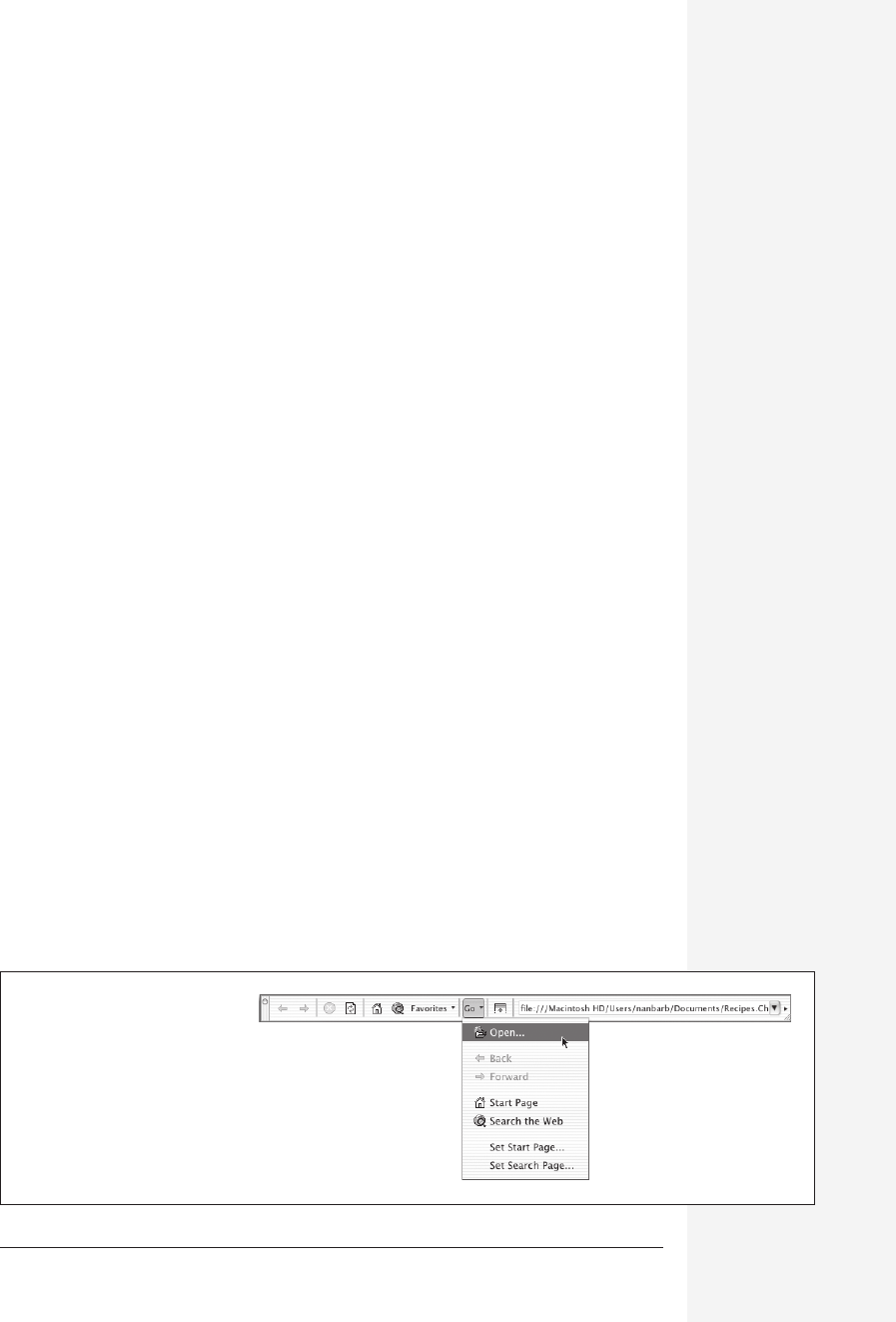
chapter 7: word meets web 277
chapter
7
I
t may be that this Internet thing has gotten out of control. It seems as though
every piece of self-respecting software, from databases to games, has been
Internet-enabled. Where would you be if you couldn’t convert, say, your recipe
file into a Web page for all the world to see?
PowerPoint, Excel, and Entourage are capable of converting your slide shows, spread-
sheets, and calendars into Web pages. But for traditional, everyday Web pages,
Microsoft intends Word to be the Web workhorse.
Word as Web Browser
In truth, Word isn’t much of a Web browser. It does have a Web toolbar (choose
View→Toolbars→Web), complete with Back, Forward, Stop, Refresh, and Home
buttons (see Figure 7-1). There’s even a Favorites menu, which you may be delighted
to discover comes populated with the bookmarks in your Internet Explorer Favor-
ites menu.
Word Meets Web
Figure 7-1:
When you type a Web address
in the box in the Web toolbar,
Word launches Internet Explorer
(or whichever browser is
selected on the Web tab of your
Internet control panel) and
opens that Web page. You don’t
even have to type the “www” or
“.com”.

278 office x for macintosh: the missing manual
But this toolbar is actually just a remote control for Internet Explorer itself. When-
ever you use one of its controls or type an address into its Address bar, your Web
browser launches (if it isn’t open already) and handles the actual task of displaying
the Web page in question.
Opening Web Pages from the Web
That’s not to say, however, that Word can’t display Web pages in its own window,
because it can. Just choose File→Open Web Page; a small dialog box appears, in
which you can type the URL (Web address) of the Web page you want. When you
click OK, Word connects to the Net and brings the specified page into its own win-
dow.
Unfortunately, Word is really only the strange preteen cousin of Internet Explorer;
not only do Web pages take a long time to appear in Word windows, but they may
also look peculiar, with a shuffled layout, enormous margins, unpredictable movie
capabilities, and other anomalies. Still, this feature may be just the ticket when you
want to grab some text out of a Web page article you just read. By bringing text into
Word, you can copy, paste, reformat, and perform other editing tricks.
Tip: When you open in Word any kind of Web-related document—a Web page, a Web template from the
Project Gallery, a Word document you’ve saved as a Web page, or any other HTML file—it automatically
opens in Online Layout view. If you ever find that you can’t see images, background colors, or other Web
features in your document, you’ve probably somehow gotten into the wrong view. Choose View→Online
Layout.
Opening Web Pages from Your Hard Drive
These days, documents that have been written using the HTML Web-design lan-
guage are no longer confined to the Internet. Because they’re relatively small, in-
clude formatting, and open with equal ease on Macs, Windows PCs, and every other
kind of computer, HTML documents are now a common exchange format for Read
Me files, software user manuals, and the like. (You know when you have one because
its file name ends with .htm or .html.)
Word can open such documents directly: Just launch Word and choose File→Open,
then navigate to the file on your Mac and click Open. The file opens into Word’s
Online Layout view. Hyperlinks work, but otherwise the file acts more like a Word
document than a Web page. For example:
• Scrolling text (see page 286) doesn’t scroll.
• Animated GIFs, such as Active Graphics (see page 282) work, but only in Online
Layout view.
• Movies designed to play automatically (and anything else requiring a Web-browser
plug-in) don’t work.
Word as
Web Browser
Get Office X for Macintosh: The Missing Manual now with the O’Reilly learning platform.
O’Reilly members experience books, live events, courses curated by job role, and more from O’Reilly and nearly 200 top publishers.

